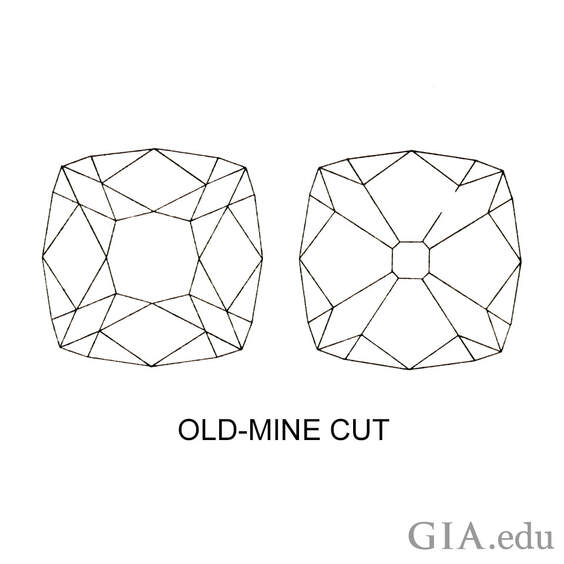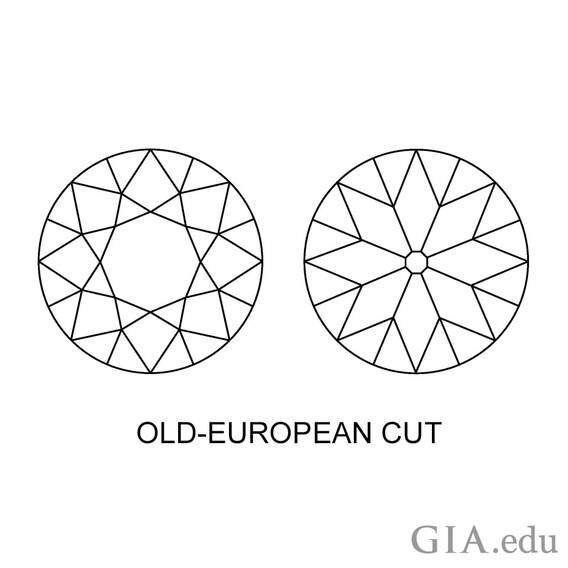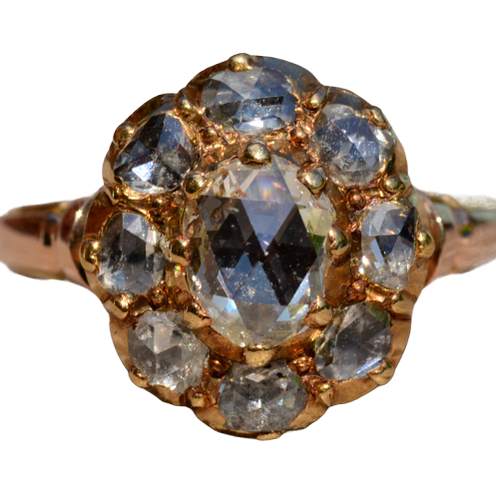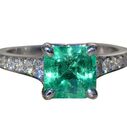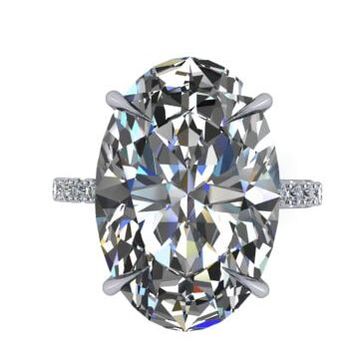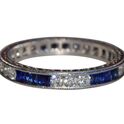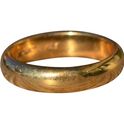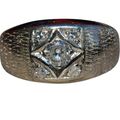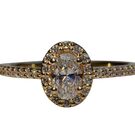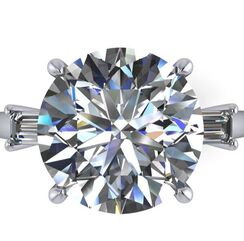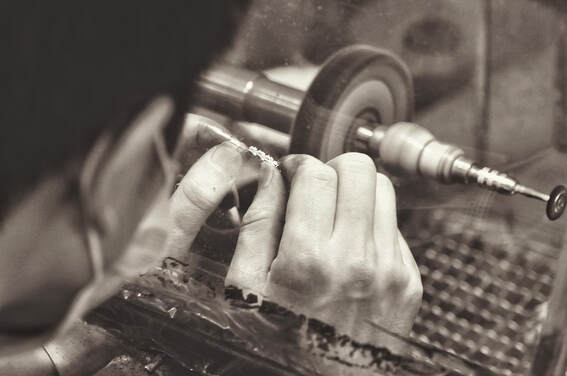Diamond Cutting and Gemstone Lapidary
Our team of lapidaries offer diamond and gemstone cutting, engraving, polishing, and carving. From small repairs, to recuts, to cutting from rough our team includes master diamond cutters and experienced colored stone lapidaries as well as graduate gemologists to fully assist in cutting, and polishing gemstones and diamonds.
Diamond Cutting and Lapidary Repair Services
Our Services include:
Diamond Repair
Gemstone Repair
Rough Cutting Services
After our cutting work is complete we are able to provide a laboratory report from The Gemological Institute of America, AGL, or similar types labs as well as appraisal services. Should you decide you'd like to make use out of your stone we are happy to discuss mounting your stone as well.
Contact us for more information
Diamond Cutting and Lapidary Repair Services
Our Services include:
Diamond Repair
- broken diamonds
- chipped diamonds
- abraded diamonds
- miss-cut diamonds
- damaged diamonds
- specialty diamond cuts
- diamond cutting
Gemstone Repair
- broken gemstones
- chipped gemstones
- abraded gemstones
- poorly cut gemstones
- native cut gemstones
- damaged gemstones
Rough Cutting Services
- Inspection
- Planning
- Execution
- Grading
After our cutting work is complete we are able to provide a laboratory report from The Gemological Institute of America, AGL, or similar types labs as well as appraisal services. Should you decide you'd like to make use out of your stone we are happy to discuss mounting your stone as well.
Contact us for more information
Rough Process
Rough Examination
A diamond begins its journey of being transformed from a rough to a polished stone by examining the rough crystals thoroughly. The rough stone is studied to determine its potential quality.
Mapping
Depending on the circumstances (size of the stone, quality of the stone, etc) a stone is mapped to determine the locations of inclusions. New technology employs a laser which simultaneously projects numerous beams on the rough stone. This allows many more of the stone’s features to be captured than previously possible. This also makes it possible to chart cavities and grooves that would have never been spotted before. The outside geometry of the rough diamond can then be converted into an accurate virtual 3D model. Later, inclusions
will be mapped after making windows on the rough diamond.
Planning
This is one of the most important phases of the entire manufacturing process. In this department our team will decide which
shape the diamond will finally take and estimate its potential weight. Each stone is unique so they must be studied in detail in order to determine the finished shape and save as much weight as we possibly can. Often times, in larger crystals we are able to cut multiple stones!
Marking
Once the final shape is determined, the diamond is marked either with ink, or with a laser to indicate where the diamond is to be sawed or cleaved (the process of dividing the stone into separate parts.
Laser Sawing
In a diamond there are different growth planes or cleveite planes the markings will often illustrate these planes for cleaving or sawing. If the marking is along with or parallel to its planes then the diamond has to be cleaved. Cleaving is generally still completed by a chisel and hammer! If the marking is perpendicular or against the planes then the diamond needs to be sawn. Sawing can be accomplished by sawing machines to cut the diamond into two pieces with blades. Currently laser sawing is the latest technology in sawing.
After the sawing or cleaving process the diamond is reviewed in planning and marking to check the results of procedures. Then is it passed on to the next process of girdling/bruting.
Blocking
It is during this stage that the diamond's facets are polished onto the stone. This is done using a mounted circular cast iron disc known as a scaife. The scaife has a surface of oil and diamond dust. The diamond to be polished is set in an adjustable dop at a certain angle and lowered onto the plate from a tang. With a diamond, the angle of the must be changed for each facet as to not break the diamond. The first step in the process of creating a finished stone, and perhaps most crucial polishing stage, is blocking. This step lays the foundation for the potential of the diamond's performance because it establishes the diamond's basic overall symmetry. During the blocking stage, the first 17 or 18 facets (depending on the final shape) are made. Those facets include the table, culet, first eight facets on the crown and pavilion. This creates what is known at this stage as a "single cut" diamond.
Shaping
Achieving the same result as girdling, the outline of a fancy shape diamond must be formed by hand, which is referred to as "shaping".
Girdling
Girdling (also known as bruting) the diamond's girdle is formed. The girdle is the band which is formed around the widest part of the stone. To form the girdle, the stone is again set in a 'dop' which is in turn fixed on to the center of a lathe which spins at high speed. Using another diamond set in a long 'bruting stick', the corners of the rough stone are gradually rounded off until the spinning diamond is perfectly round. The process of rounding a diamond to form its girdle is customarily done by grinding one diamond against another on a rotating wheel.
Brillianteering
Brillianteering is the process of grinding or polishing the forty final facets on a brilliant cut diamond after the "blocker" has cut the table and the "eights" on the crown and pavilion. In this process, a specialist called a brillianteer polishes the final facets. During this process and after this process the stone is inspected for quality and improvements.
Polishing
This is the degree of smoothness of each facet of a diamond as measured by a gemologist. When a diamond is cut and polished, microscopic surface defects may be created by the polishing wheel as it drags tiny dislodged diamond dust across the diamond's surface. This is the last step in the manufacturing process of a diamond and is done very carefully for a fine finish. From here it will go to our gemologists for a final examination before its finish or sent for grading.
Rough Examination
A diamond begins its journey of being transformed from a rough to a polished stone by examining the rough crystals thoroughly. The rough stone is studied to determine its potential quality.
Mapping
Depending on the circumstances (size of the stone, quality of the stone, etc) a stone is mapped to determine the locations of inclusions. New technology employs a laser which simultaneously projects numerous beams on the rough stone. This allows many more of the stone’s features to be captured than previously possible. This also makes it possible to chart cavities and grooves that would have never been spotted before. The outside geometry of the rough diamond can then be converted into an accurate virtual 3D model. Later, inclusions
will be mapped after making windows on the rough diamond.
Planning
This is one of the most important phases of the entire manufacturing process. In this department our team will decide which
shape the diamond will finally take and estimate its potential weight. Each stone is unique so they must be studied in detail in order to determine the finished shape and save as much weight as we possibly can. Often times, in larger crystals we are able to cut multiple stones!
Marking
Once the final shape is determined, the diamond is marked either with ink, or with a laser to indicate where the diamond is to be sawed or cleaved (the process of dividing the stone into separate parts.
Laser Sawing
In a diamond there are different growth planes or cleveite planes the markings will often illustrate these planes for cleaving or sawing. If the marking is along with or parallel to its planes then the diamond has to be cleaved. Cleaving is generally still completed by a chisel and hammer! If the marking is perpendicular or against the planes then the diamond needs to be sawn. Sawing can be accomplished by sawing machines to cut the diamond into two pieces with blades. Currently laser sawing is the latest technology in sawing.
After the sawing or cleaving process the diamond is reviewed in planning and marking to check the results of procedures. Then is it passed on to the next process of girdling/bruting.
Blocking
It is during this stage that the diamond's facets are polished onto the stone. This is done using a mounted circular cast iron disc known as a scaife. The scaife has a surface of oil and diamond dust. The diamond to be polished is set in an adjustable dop at a certain angle and lowered onto the plate from a tang. With a diamond, the angle of the must be changed for each facet as to not break the diamond. The first step in the process of creating a finished stone, and perhaps most crucial polishing stage, is blocking. This step lays the foundation for the potential of the diamond's performance because it establishes the diamond's basic overall symmetry. During the blocking stage, the first 17 or 18 facets (depending on the final shape) are made. Those facets include the table, culet, first eight facets on the crown and pavilion. This creates what is known at this stage as a "single cut" diamond.
Shaping
Achieving the same result as girdling, the outline of a fancy shape diamond must be formed by hand, which is referred to as "shaping".
Girdling
Girdling (also known as bruting) the diamond's girdle is formed. The girdle is the band which is formed around the widest part of the stone. To form the girdle, the stone is again set in a 'dop' which is in turn fixed on to the center of a lathe which spins at high speed. Using another diamond set in a long 'bruting stick', the corners of the rough stone are gradually rounded off until the spinning diamond is perfectly round. The process of rounding a diamond to form its girdle is customarily done by grinding one diamond against another on a rotating wheel.
Brillianteering
Brillianteering is the process of grinding or polishing the forty final facets on a brilliant cut diamond after the "blocker" has cut the table and the "eights" on the crown and pavilion. In this process, a specialist called a brillianteer polishes the final facets. During this process and after this process the stone is inspected for quality and improvements.
Polishing
This is the degree of smoothness of each facet of a diamond as measured by a gemologist. When a diamond is cut and polished, microscopic surface defects may be created by the polishing wheel as it drags tiny dislodged diamond dust across the diamond's surface. This is the last step in the manufacturing process of a diamond and is done very carefully for a fine finish. From here it will go to our gemologists for a final examination before its finish or sent for grading.
